| basic information |
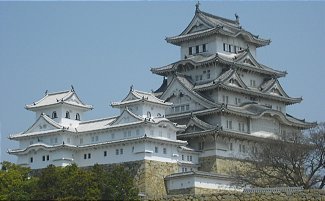
History of Castles
The need for castles arouse after the central government's authority had weakened in the 15th century and Japan had fallen into the chaotic era of warring states (sengoku jidai). During that era, Japan consisted of dozens of small independent states which were fighting each other and, for defense purposes, were building small castles on top of mountains.
When Oda Nobunaga reestablised a central authority over Japan about a century later, and his successor Toyotomi Hideyoshi completed the reunification of Japan, many larger castles were built across the country. Unlike the earlier castles, they were built in the plains or on small hills in the plains, where they served as a region's administrative and military headquarters, and became the centers of "castle towns".
During the Meiji Period, many castles were destroyed as unwelcome relicts of the feudal past, and even more were lost in World War II. Only about a dozen original castles, i.e. castles that date from the feudal era (before 1868), survive today. Furthermore, several dozen castles were reconstructed over the past decades.
Castle Structures and Castle Towns
The typical, large castle consisted of three rings of defense, with the so called honmaru ("main circle") in the center followed by the ninomaru ("second circle") and sannomaru ("third circle"). The castle tower stood in the honmaru, while the lords usually lived at a more comfortable residence in the ninomaru.
In the town around the castle, the samurai were residing. The higher their rank, the closer they lived to the castle. Merchants and artisans lived in special areas, while temple and entertainment districts were usually located just outside the city. Tokyo and Kanazawa are two good examples among many Japanese cities which evolved as castle towns.
The main construction material for castle buildings used to be wood, as can be witnessed when visiting the interior of one of the surviving original castles. Most newer reconstructions, however, are made of concrete, and their interiors are modern. Most castles now house a museum.
The following are some typical castle structures:
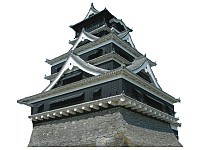 | Castle Tower (Tenshukaku) Also known as donjon or castle keep, this is the innermost, best defended and most prominent structure of a castle. Most castle towers have between two to five stories, and there are usually more floors inside than there are stories on the outside. |
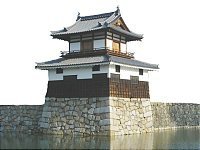 | Guard Tower (Yagura) Also known as turrets, these are watch towers and storage rooms along the castle walls. |
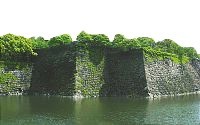 | Walls and moats Several rings of walls and moats served as a defense measure. Osaka Castle and the former Edo Castle (now Tokyo's Imperial Palace) offer the most impressing examples. |
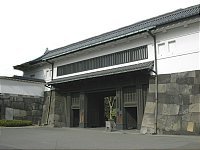 | Gates The typical castle gate consists of two gates which are placed in a 90 degree angle to each other, creating a small inner yard which is heavily defended from all sides. |
| Original Castles | ||||||||||||||||||||
| ||||||||||||||||||||
| Reconstructions | ||||||||||||||||||||
| ||||||||||||||||||||
| Palace Style Castles and Ruins | ||||||||||||||||||||
| ||||||||||||||||||||
1 comment:
Woooowww.. This Site is actually verry verry cooolll.. I like it...
And, i am a student who join Nippon Club in Indonesia. This article is very interesting, maybe I can recommend this site..
I wonder why you could get all those photos.. Did you take by yourself?
N, where do you live?
Nice to see this blog
Post a Comment